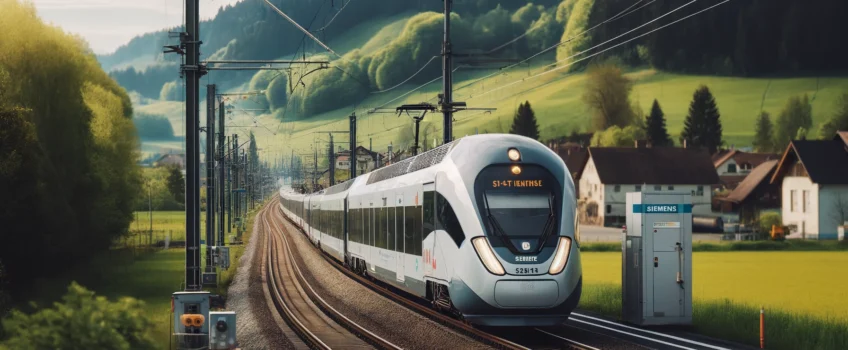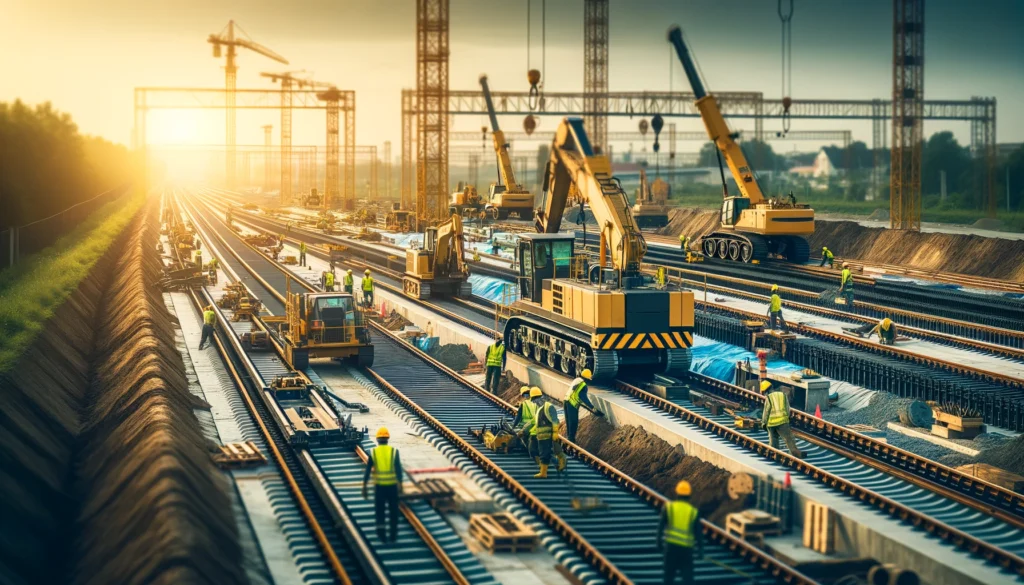
The Evolution of Rail Engineering
Rail engineering has experienced profound transformations over the years, evolving into one of the most dynamic sectors in transportation. From the advent of steam engines to the introduction of high-speed rail, the industry has consistently embraced innovation to boost efficiency and enhance the passenger experience.
Contemporary rail engineering prioritises not only speed and capacity but also sustainability and environmental impact reduction. This evolution has incorporated advanced materials, automated systems, and eco-friendly technologies, firmly establishing rail transport as a cornerstone of future mobility solutions.
Today, rail engineering encompasses a wide range of disciplines including civil, electrical, and mechanical engineering. These fields work in tandem to develop and maintain the infrastructure and vehicles that form the backbone of the rail network. The collaboration between these engineering specialties ensures that rail systems are safe, reliable, and efficient, meeting the growing demands of urbanisation and increased passenger numbers.
Rail Engineering Innovations in High Voltage Switchgear
One of the critical components in modern rail systems is high voltage switchgear. This technology is essential for managing the electrical power that drives trains and supports the infrastructure. High voltage switchgear controls the flow of electricity, ensuring that it is distributed safely and efficiently throughout the rail network. Recent advancements in switchgear technology have led to more compact, robust, and efficient designs, which are crucial for the high demands of contemporary rail systems.
The integration of high voltage switchgear in rail engineering has significantly improved the reliability and safety of rail networks. Innovations such as digital switchgear have enabled real-time monitoring and control, reducing the risk of failures and enhancing maintenance efficiency. By leveraging these technologies, rail operators can ensure consistent power supply, minimise downtime, and improve overall operational efficiency.

Sustainable Solutions with Battery Bi-Mode Trains
The search for sustainability in rail engineering has led to the development of battery bi-mode trains. These trains offer a dual-power solution, operating on both overhead electric wires and battery power. This technology presents a cost-effective and environmentally friendly alternative to traditional diesel-powered trains. Battery bi-mode trains can significantly reduce carbon emissions and reliance on fossil fuels, aligning with global efforts to combat climate change.
Siemens Mobility has been at the forefront of this innovation, claiming that their battery bi-mode trains could save Britain’s railways £3.5 billion and 12 million tonnes of CO2 over 35 years. These trains are designed to switch seamlessly between overhead wires on electrified routes and batteries on non-electrified sections, providing a versatile and sustainable transport solution. The ability to charge batteries while in motion or at stations ensures minimal disruption and maximises efficiency.
The Role of Rail Engineering in Modern Infrastructure
Rail engineering is pivotal in developing and maintaining the infrastructure that supports efficient and reliable train services. This includes the construction and maintenance of tracks, stations, and signalling systems. Advanced engineering techniques and materials have led to the creation of more durable and resilient infrastructure, capable of withstanding the rigours of heavy usage and harsh environmental conditions.
Moreover, rail engineering plays a crucial role in enhancing passenger experience. Modern station designs incorporate state-of-the-art amenities and accessibility features, ensuring comfort and convenience for all travellers. Innovations in signalling and communication systems also contribute to improved safety and reduced travel times, making rail transport a more attractive option for commuters and long-distance travellers alike.
The Future of Rail Engineering
The future of rail engineering looks promising, with continuous advancements poised to transform the industry further. Emerging technologies such as artificial intelligence, the Internet of Things (IoT), and big data analytics are set to revolutionise how rail systems are managed and operated. These technologies will enable more predictive maintenance, efficient resource allocation, and enhanced passenger services, ensuring that rail transport remains a vital component of global mobility.
As urbanisation accelerates, the demand for efficient and sustainable transport solutions will continue to grow. Rail engineering will play a crucial role in meeting these demands, driving innovation and delivering solutions that are both economically and environmentally sustainable. With a strong focus on research and development, the rail industry is well-positioned to address future challenges and opportunities.
Our Expertise in Rail Engineering
With over 30 years of experience, we have been at the forefront of providing expert, quality, reliable, and affordable engineering and fabrication solutions. Our journey began with a focus on high voltage switchgear, rail products, and the oil and gas industries. We quickly realised the need for a comprehensive service that delivers on the promise of being a one-stop shop.
Our entry into the rail industry was marked by a collaboration with Claverham to develop electromechanical points. By engineering cost-effective solutions, we made these systems more accessible to the rail industry. Our consistent delivery of high-quality components has seen our products installed at over 800 locations.
Our rail portfolio has expanded to include track laying and maintenance equipment, electrical connections, contacts, and other rolling stock products. We have secured contracts with major clients such as Transport for London and the Underground Rail Network, and we continue to innovate with overhead line equipment in partnership with companies like Hawker Siddeley Switchgear.
Contact PRV Engineering Today
Our team of experts is ready to assist with installations across various locations, including factories, warehouses, offices, schools, medical and sports facilities, retail, and residential units. For any inquiries about our range of products and services or to request a quote, please contact us via our website or call us on 01495 769697.


 Mail:
Mail: 




